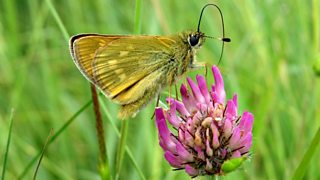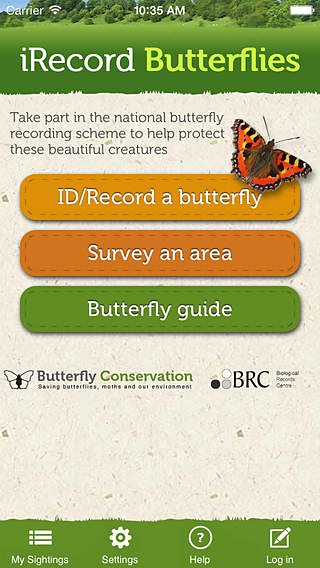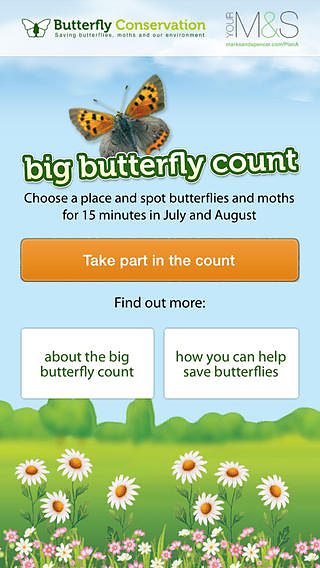Summerwatch young guest blogger, Olly Frampton kindly wrote us this post on how to get involved when it comes to recording butterflies.
Ìý
Ìý
An iconic sight of a British Summer, butterflies floating past at the peak of a gloriously sunny day, on only the slightest breath of wind. They are a delight to see no matter where you are, whether it's your garden, your local park, workplace, or at a local nature reserve. Butterflies are one of the most iconic species on Earth, with many people believing they represent beauty, freedom, peace, and that they are a sign of a healthy environment.
Butterflies have a high sensitivity to environmental conditions, and they react quickly to changes, making them excellent representatives for the responsesÌý of other wildlife. For this reason, it is essential to record butterflies and to allow their population trends to be monitored by the relevant organisations.

Large skipper butterfly
Ìý
Ìý
Ìý
Ìý
Ìý
Why record butterflies?
- Butterfly declines are an early warning for other wildlife losses. They are quick to react to change, so their struggle to survive would be a serious warning about our environment.
- Sightings allow scientists to identify trends in species that help understand the effects of climate change on wildlife and how to protect butterflies from extinction.
- Many species have reduced in numbers, with at least 4 butterfly and 60 moth species becoming extinct in the UK since 1900.
ÌýWho can do this recording / monitoring?
- Anyone can help out, with much of the current recording done voluntarily by members of the public, who kindly donate much of their time to help make a difference.
How to get involved?

iRecord Butterflies screen
ÌýThe iRecord Butterflies app is an excellent contribution to citizen science and makes submitting sightings really easy.
Using the Butterfly guide, you can identify the species you've seen, then enter some basic information like the number you saw, and where you saw them. The app can automatically calculate where you are (using GPS in the Smartphone) and provide a grid reference for the sighting and you can then submit the data immediately.
ÌýThe iRecord Butterflies app is available for and smartphones.
The big butterfly count, launched in 2010, is now the largest butterfly survey in the world. Last year, over 800,000 butterflies and day-flying moths were recorded by 46,000 volunteers. It is a simple survey where you count how many different types of butterfly you see during a 15 minute period at a location of your choice. This year's count takes place from 19th July until 10th August.

Big butterfly count screen grab
Ìý
Ìý
For much more information, visit where you can download the free big butterfly count app for iOS and Android devices.
Ìý
Ìý
Ìý

Olly Frampton bio photo
Butterfly and dragonfly enthusiast and photographer from Dorset, a passionate birder, naturalist, & wildlife blogger.
Ìý
Ìý
